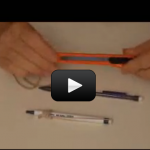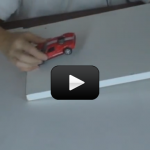Kinetic energy is the energy of motion. Kinetic energy is an expression of the fact that a moving object can do work on anything it hits; it describes the amount of work the object could do as a result of its motion.Whether something is zooming, racing, spinning, rotating, speeding, flying, or diving… if it’s moving, it has kinetic energy. How much energy it has depends on two important things: how fast it’s going and how much it weighs. A bowling ball cruising at 100 mph has a lot more kinetic energy than a cotton ball moving at the same speed.
[am4show have='p8;p9;p11;p38;p72;p77;p92;' guest_error='Guest error message' user_error='User error message' ]
Let’s recap the highlights for kinetic as well as potential energy, so you can see how they are related.This lesson we’re going to talk about kinetic energy, transfer of energy, conservation of energy and energy efficiency. This video gets you started on the right foot. We’ll outline what’s coming up for this week and how to get the most out of our lesson together. Enjoy!
Scientific Concepts:
- Potential Energy is the amount of energy something can use to do work.
- Gravitational potential energy is the amount of energy something has due to its height above the ground. The higher it is and more mass it has the more gravitational potential energy it has. PE=mgh
- Kinetic energy is energy of motion. The faster something is moving and/or the more massive it is the more kinetic energy it has. KE=1/2 mv2
- Energy can be transferred, in other words it can be changed from one form to another and from one object to another.
- Conservation of energy means that in a closed system energy can neither be created or destroyed.
- Energy efficiency is how much energy in a system is transferred to useless energy. The most common forms of useless energy are sound energy and heat energy.
[/am4show]






